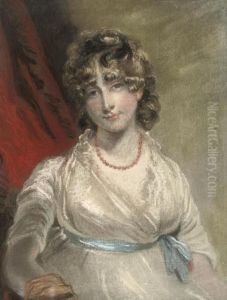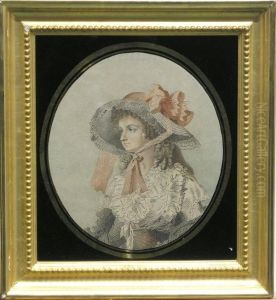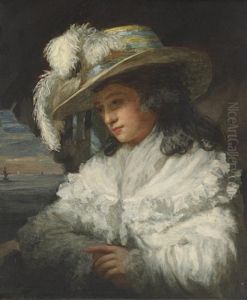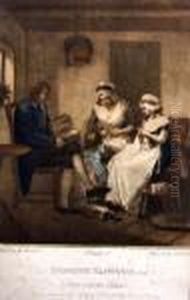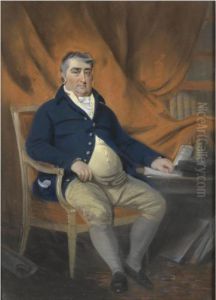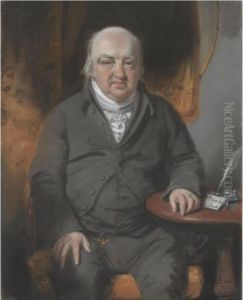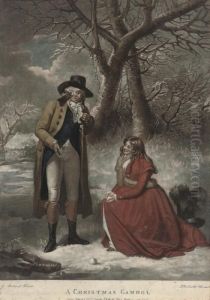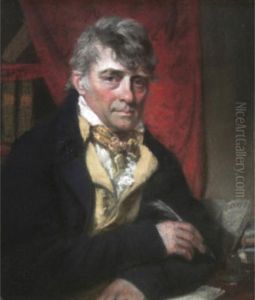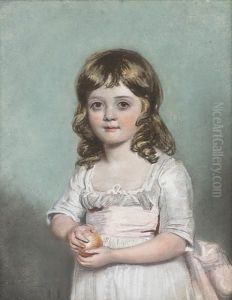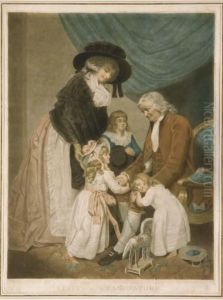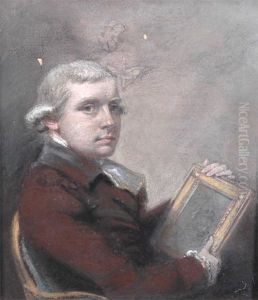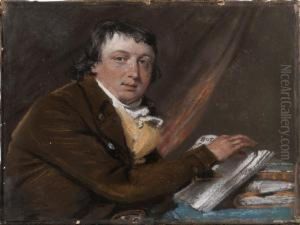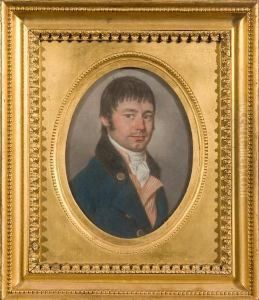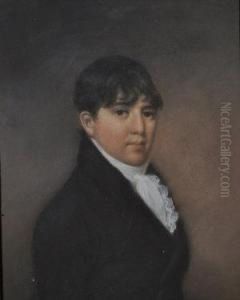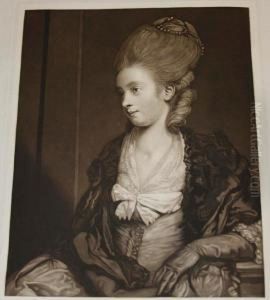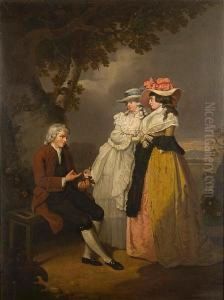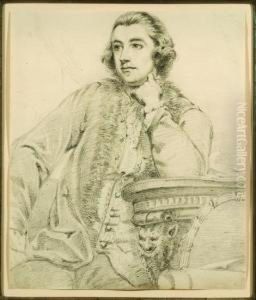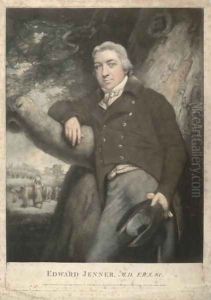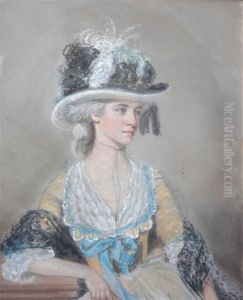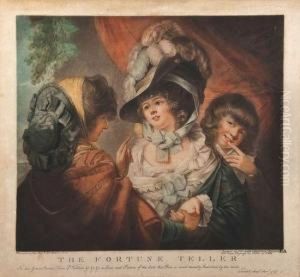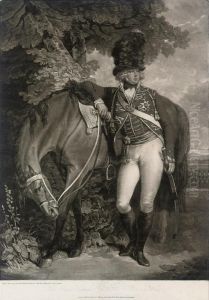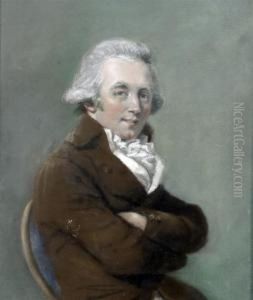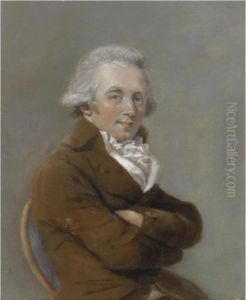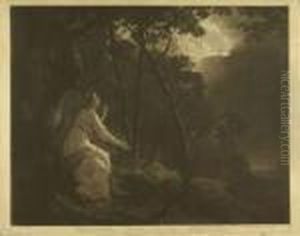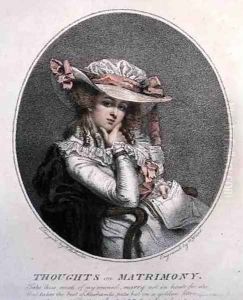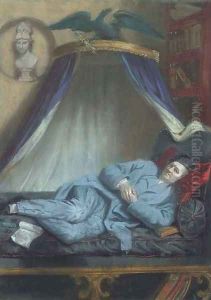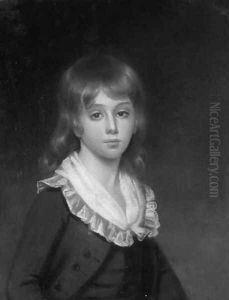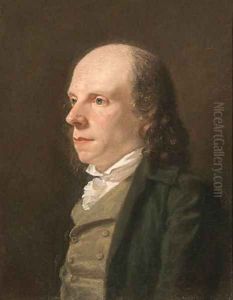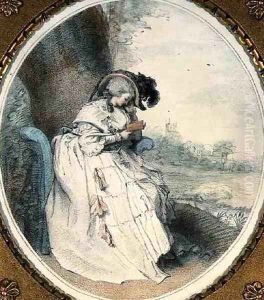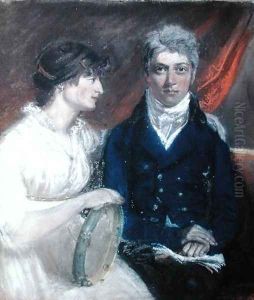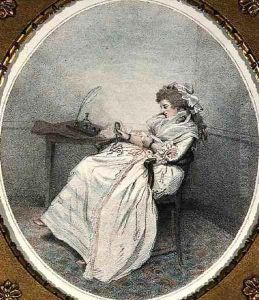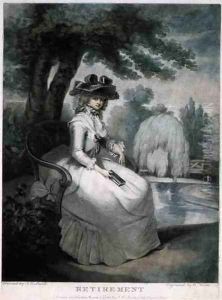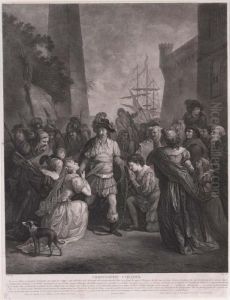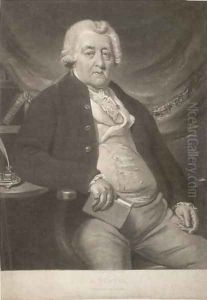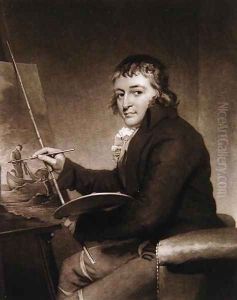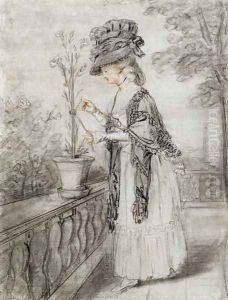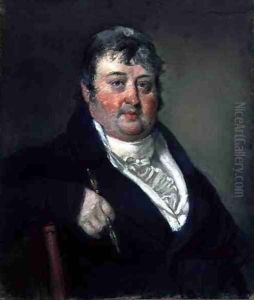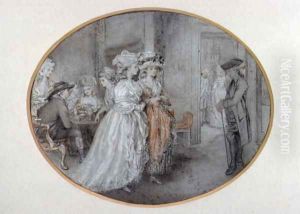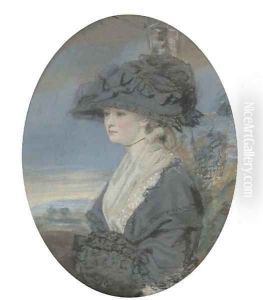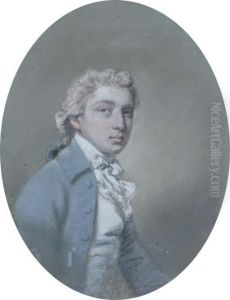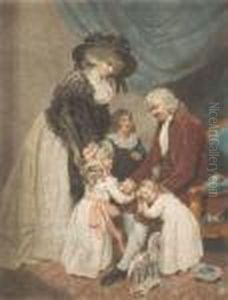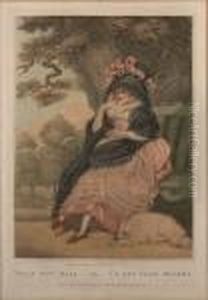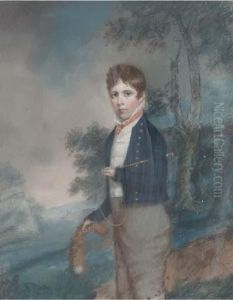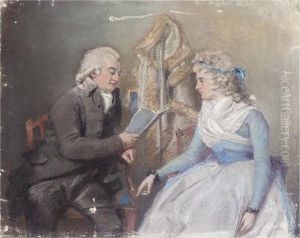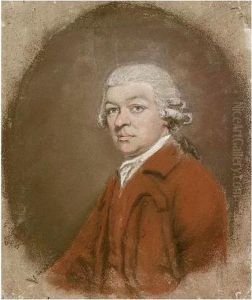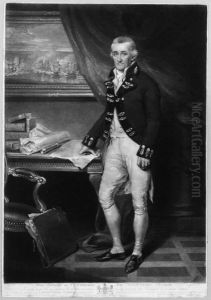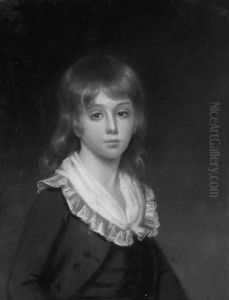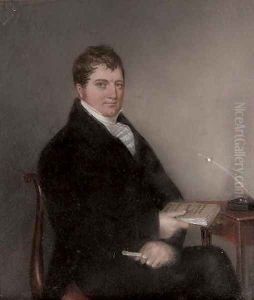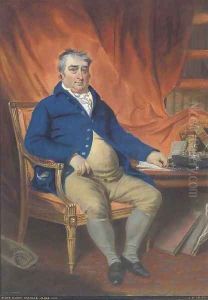John Raphael Smith Paintings
John Raphael Smith was an English painter and mezzotint engraver, renowned for his work as a printmaker and for his contributions to the world of British art during the late 18th century. Born on May 25, 1751, in Derby, England, Smith was the son of the landscape painter Thomas Smith, also known as 'Smith of Derby.' His early exposure to the arts through his father's work laid the foundation for his future career.
Smith initially trained under his father, but his interest in printmaking led him to move to London, where he became an apprentice to the renowned mezzotint engraver Thomas Watson. Smith quickly mastered the art of mezzotint, a type of printmaking that allows for the creation of images with soft gradations of tone, making it particularly suited for reproducing the effects of oil paintings.
By the 1770s, Smith had established himself as one of the leading mezzotint engravers of his time. He became famous for his prints after paintings by contemporary artists, such as Sir Joshua Reynolds and George Romney. Smith's ability to capture the subtleties of the original paintings and his skill in translating them into prints brought him considerable success and recognition.
In addition to his work as an engraver, Smith was also a talented painter, although he is less well-known for this aspect of his artistry. He painted portraits, miniatures, and genre scenes, often depicting the daily life of the British middle class with both humor and pathos.
Smith's personal life was marked by a dynamic social circle and a series of romantic entanglements. He was known for his charm and wit, which, along with his artistic talents, made him a popular figure within London's artistic community. Despite his success, Smith struggled with financial difficulties throughout his life, in part due to his extravagant lifestyle and lack of financial acumen.
John Raphael Smith's influence extended beyond his own practice as he taught and mentored other artists, helping to disseminate his techniques and aesthetic approach. His legacy includes a large body of work that continues to be studied and appreciated for its technical excellence and its reflection of British society during the period.
Smith died on March 2, 1812, in Doncaster, England. His contributions to mezzotint engraving and British art history remain significant, and his works are held in various prestigious collections, including the British Museum and the National Portrait Gallery in London.
